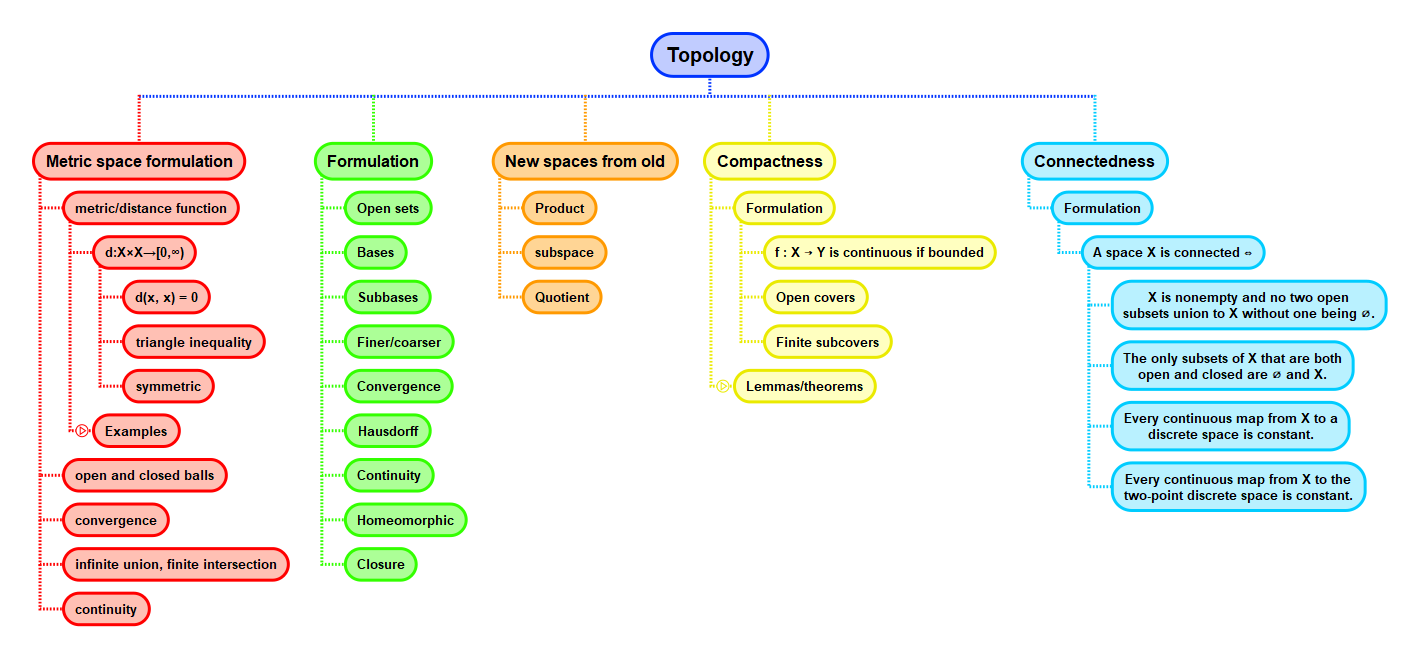Homeomorphisms. Homeomorphic spaces.
Homeomorphisms and homeomorphic spaces.
Let \( X \) and \( Y \) be topological spaces.
- Homeomorphism
- A homeomorphism from \( X \) to \( Y \) is a continuous bijection whose inverse is also continuous.
- Homeomorphic spaces
- The spaces \( X \) and \( Y \) are homeomorphic iff there exists a homeomorphism between them.
\( X \cong Y \) is the notation for \( X \) to be homeomorphic to \( Y \). 'Topologically equivalent' is an alternative term for 'homeomorphic'.
When are two spaces homeomorphic?
To show that two spaces are homeomorphic, find a homeomorphism between them.
Roughly, two spaces are homeomorphic iff one can be deformed into the other by bending and reshaping, but without tearing or gluing.
Equivalence relation
Being homeomorphic is an equivalence relation on the class of all topological spaces.
- Reflexive
- Let \( X \) be a topological space. Then the identity map on \( X \) is a homeomorphism.
- Symmetric
- Let \( f : X \to Y \) be a homeomorphism. Then \( f^{-1} : Y \to X \) is a homeomorphism.
- Transitive
- Let \( f : X \to Y \) and \( g : Y \to Z \) be homeomorphisms. Then \( g \circ f : X \to Z \) is a homeomorphism.
Thus, \( X \cong X \); \( X \cong Y \iff Y \cong X \); \( X \cong Y \land Y \cong Z \implies X \cong Z \).
Knots homeomorphic to the circle
Some cases of homeomorphisms seem to defy the restriction to bending and reshaping: all knots are homeomorphic to the circle. To see this, take two knots of 1m string; choose a point on each as a starting point; then, trace around each knot at the same rate until you reach the start again. This defines a homeomorphism. While we can't bend a knot into a circle in \( \mathbb{R}^3 \), any knot can be reshaped into a circle if both are first placed in \( \mathbb{R}^4 \).
Bijection with non-continuous inverse
The inverse of a continuous bijection need not be continuous.
An easy way of constructing an example is to consider continuous maps to a set with the discrete topology. For example, the identity map \( i : (\mathbb{R}, \text{discrete topology}) \to (\mathbb{R}, \text{standard topology}) \) is continuous, but the inverse, \( \) \( i^{-1} : (\mathbb{R}, \text{standard topology}) \to (\mathbb{R}, \text{discrete topology}) \) is not continuous.
Context

